CPSF6 links alternative polyadenylation to metabolism adaption in hepatocellular carcinoma progression
- PMID: 33648552
- PMCID: PMC7923339
- DOI: 10.1186/s13046-021-01884-z
CPSF6 links alternative polyadenylation to metabolism adaption in hepatocellular carcinoma progression
Abstract
Background: Alternative polyadenylation (APA) is an important mechanism of gene expression regulation through generation of RNA isoforms with distinct 3' termini. Increasing evidence has revealed that APA is actively involved in development and disease, including hepatocellular carcinoma (HCC). However, how APA functions in tumor formation and progression remains elusive. In this study, we investigated the role of cleavage factor I (CFIm) subunit CPSF6 in human hepatocellular carcinoma (HCC).
Methods: Expression levels of CPSF6 in clinical tissues and cell lines were determined by qRT-PCR and western blot. Functional assays, including the cell number, MTT, colony formation and transwell, were used to determine the oncogenic role of CPSF6 in HCC. Animal experiments were used to determine the role of CPSF6 in HCC tumorigenicity in vivo. Deep sequencing-based 3 T-seq was used to profile the transcriptome-wide APA sites in both HCC cells and CPSF6 knockdown HCC cells. The function of CPSF6-affected target NQO1 with distinct 3'UTRs was characterized by metabolism assays.
Results: We observed CPSF6 was upregulated in HCC and the high expression of CPSF6 was associated with poor prognosis in patients. Overexpression of CPSF6 promoted proliferation, migration and invasion of HCC cells in vitro and in vivo. Transcriptome-wide APA profiling analysis indicated that high expression of CPSF6 promoted the favorable usage of the proximal poly(A) site in the 3'UTR of NQO1. We demonstrated CPSF6-induced tumorigenic activities were mediated by the NQO1 isoform with short 3'UTR. Furthermore, we found that CPSF6 induced metabolic alterations in liver cells through NQO1.
Conclusion: CPSF6 plays a critical role in HCC progression by upregulating NQO1 expression through APA. These findings provide evidence to demonstrate that APA of NQO1 contributes to HCC progression and may have implications for developing new therapeutic strategy against this disease.
Keywords: Alternative polyadenylation; CPSF6; Hepatocellular carcinoma; Metabolism; NQO1.
Conflict of interest statement
The authors declare that they have no competing interests.
Figures
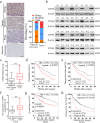
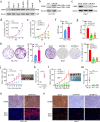


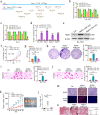
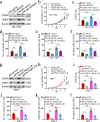

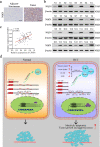
Similar articles
-
IGF2BP2 binding to CPSF6 facilitates m6A-mediated alternative polyadenylation of PUM2 and promotes malignant progression in ovarian cancer.Clin Transl Med. 2025 Jul;15(7):e70388. doi: 10.1002/ctm2.70388. Clin Transl Med. 2025. PMID: 40629911 Free PMC article.
-
NUDT21 negatively regulates PSMB2 and CXXC5 by alternative polyadenylation and contributes to hepatocellular carcinoma suppression.Oncogene. 2018 Aug;37(35):4887-4900. doi: 10.1038/s41388-018-0280-6. Epub 2018 May 21. Oncogene. 2018. PMID: 29780166
-
CPSF3 regulates alternative polyadenylation of CNIH2 to promote esophageal squamous cell carcinoma progression.Cancer Lett. 2024 Jul 1;593:216925. doi: 10.1016/j.canlet.2024.216925. Epub 2024 May 6. Cancer Lett. 2024. PMID: 38718887
-
HIV-1-induced translocation of CPSF6 to biomolecular condensates.Trends Microbiol. 2024 Aug;32(8):781-790. doi: 10.1016/j.tim.2024.01.001. Epub 2024 Jan 23. Trends Microbiol. 2024. PMID: 38267295 Free PMC article. Review.
-
mRNA alternative polyadenylation (APA) in regulation of gene expression and diseases.Genes Dis. 2021 Oct 18;10(1):165-174. doi: 10.1016/j.gendis.2021.09.005. eCollection 2023 Jan. Genes Dis. 2021. PMID: 37013028 Free PMC article. Review.
Cited by
-
Identification of microRNA hsa-miR-30c-5p as an inhibitory factor in the progression of hepatocellular carcinoma and investigation of its regulatory network via comprehensive analysis.Bioengineered. 2021 Dec;12(1):7165-7177. doi: 10.1080/21655979.2021.1979439. Bioengineered. 2021. PMID: 34503377 Free PMC article.
-
Downregulation of CPSF6 leads to global mRNA 3' UTR shortening and enhanced antiviral immune responses.PLoS Pathog. 2024 Feb 28;20(2):e1012061. doi: 10.1371/journal.ppat.1012061. eCollection 2024 Feb. PLoS Pathog. 2024. PMID: 38416782 Free PMC article.
-
CPSF1 positively regulates NSDHL by alternative polyadenylation and promotes gastric cancer progression.Am J Cancer Res. 2022 Oct 15;12(10):4566-4583. eCollection 2022. Am J Cancer Res. 2022. PMID: 36381317 Free PMC article.
-
Deregulated expression and subcellular localization of CPSF6, a circRNA-binding protein, promote malignant development of esophageal squamous cell carcinoma.Chin J Cancer Res. 2022 Feb 28;34(1):11-27. doi: 10.21147/j.issn.1000-9604.2022.01.02. Chin J Cancer Res. 2022. PMID: 35355934 Free PMC article.
-
Crosstalk between RNA-binding proteins and non-coding RNAs in tumors: molecular mechanisms, and clinical significance.Int J Biol Sci. 2025 Apr 21;21(7):2991-3010. doi: 10.7150/ijbs.109593. eCollection 2025. Int J Biol Sci. 2025. PMID: 40384875 Free PMC article. Review.
References
MeSH terms
Substances
LinkOut - more resources
Full Text Sources
Other Literature Sources
Medical
Miscellaneous

